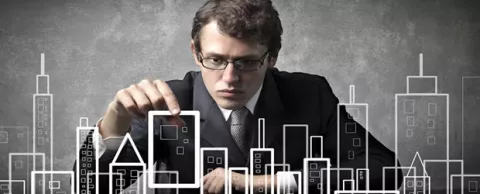
St. Albert is an attractive community of about 61,500 residents adjacent to Edmonton, the capital of the province of Alberta. Well known as "The Botanical Arts City," a reflection of the things its citizens enjoy, St. Albert city leaders also want it to be known as an example of a truly smart city.
According to Maya Pungur-Buick, the city's general manager for corporate strategic services, St. Albert has implemented 80 programs and services that could be considered smart city-related. Among them are mobile apps to help citizens locate their bus or report potholes, an online statistics tracker and a GPS system that keeps tabs on public works equipment.
But, as she told an audience at a smart city symposium in Banff earlier this month, her city had no real strategy when it took its earliest steps toward a smart city transition.
How St. Albert's smart city master plan came to be
Fortunately for the city, that didn't last long. When Patrick Draper, the new city manager, came on board a couple years ago and asked for a master plan, a working group of citizens, city officials and staff began work on a smart city master plan. After two years in development the plan will likely be presented to the public during a city council meeting in May.
As the St. Albert Gazette noted, the council has yet to approve the plan. But council member Cathy Heron shared a few key points during the symposium. She said the city came up with 20 primary projects to address and the series of steps needed to implement them.
Heron cited a few as examples:
- Commit to open government
- Develop a sensor array
- Speed up intelligent transportation efforts
- Improve customer service and engagement
- Connect city facilities and assets through the city's network infrastructure
- Improve community connectivity
Most of the 20 primary items in the proposed master plan include cost estimates and those will need individual approval from the city council. As Heron said, "It's going to be expensive."
Just so you know...
Whether your city is roughly at the same point in its smart city initiative, further along or in the early planning stages, there are resources that can make life simpler for the city officials, citizens and other stakeholders who have the responsibility for strategic planning. The Smart Cities Council Smart Cities Readiness Guide not only helps cities develop a wish list of projects and ideas for their transformation, it also provides guidance for how to turn them into a solid plan of action, find partners and much more.
City leaders throughout the world have used the Readiness Guide as a reference to help them make their cities more livable, sustainable an successful. The Readiness Guide is now online and regularly updated.
And for cities with goals that include, like St. Albert, more open government and improved customer service and citizen engagement there are tools to help cities accomplish them. Among them are offerings like CivicTRAK, an app for mobile and web devices from Council Associate Partner SunGard Public Sector. It's a convenient way for citizens to report issues and make requests and for governments to quickly respond to them and track their resolution.
Related articles…
Are you working with utilities on your smart city plans? If not, you should be
New online Smart Cities Readiness Guide helps you plot your future
5 proven steps to help cities buy smarter
Doug Peeples is a Portland, Oregon-based writer specializing in technology and energy. Follow @smartccouncil on Twitter.



